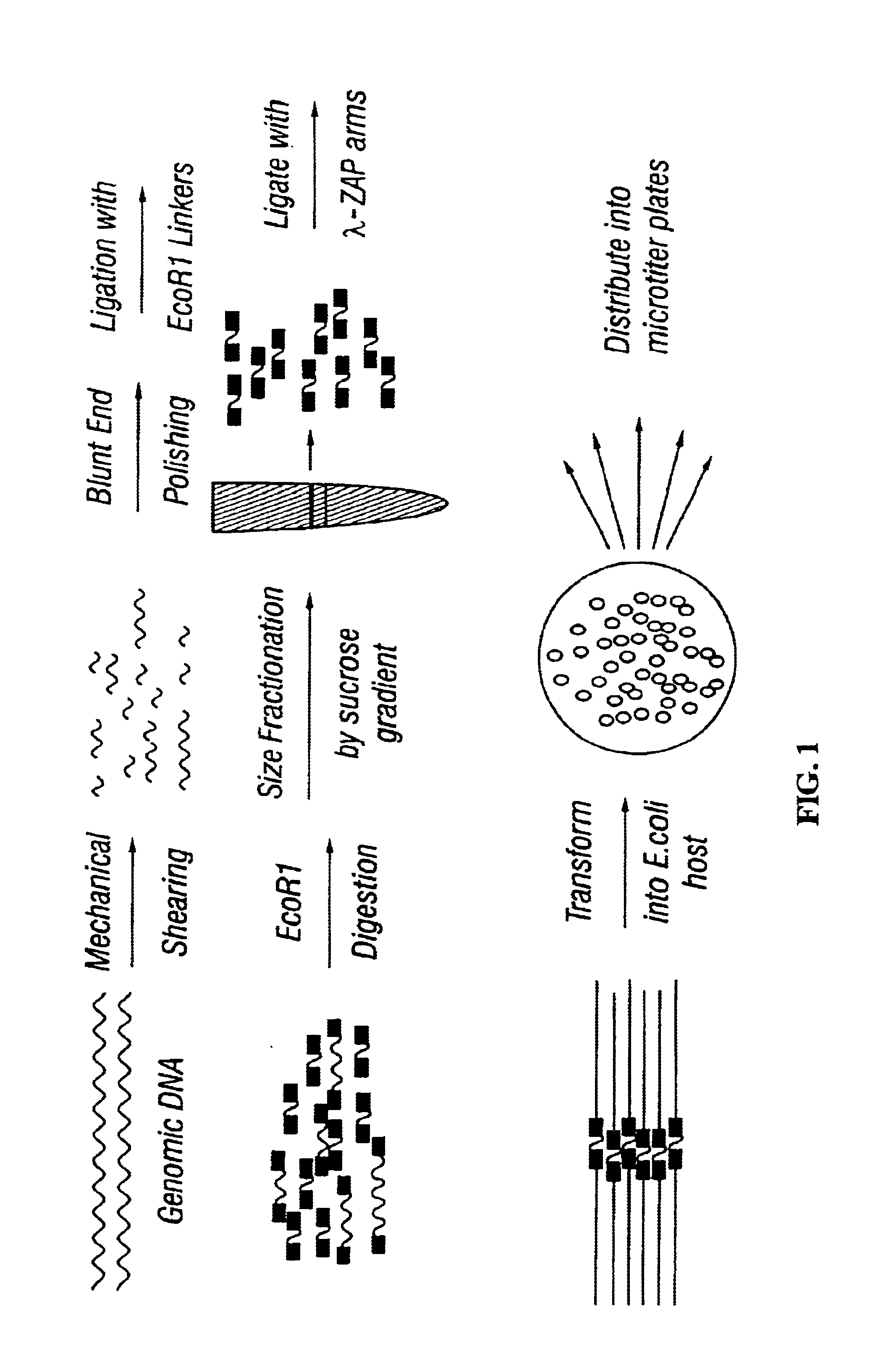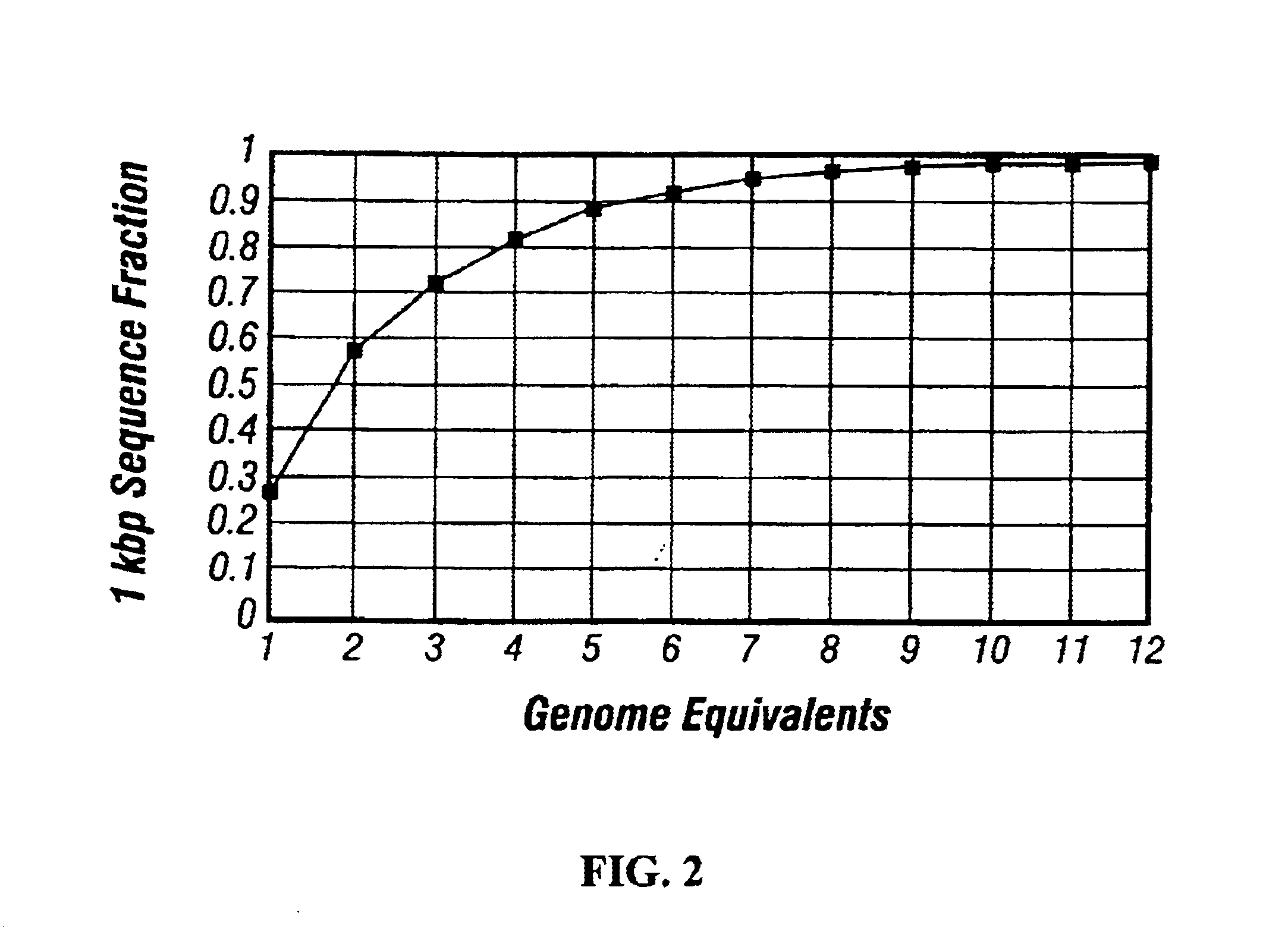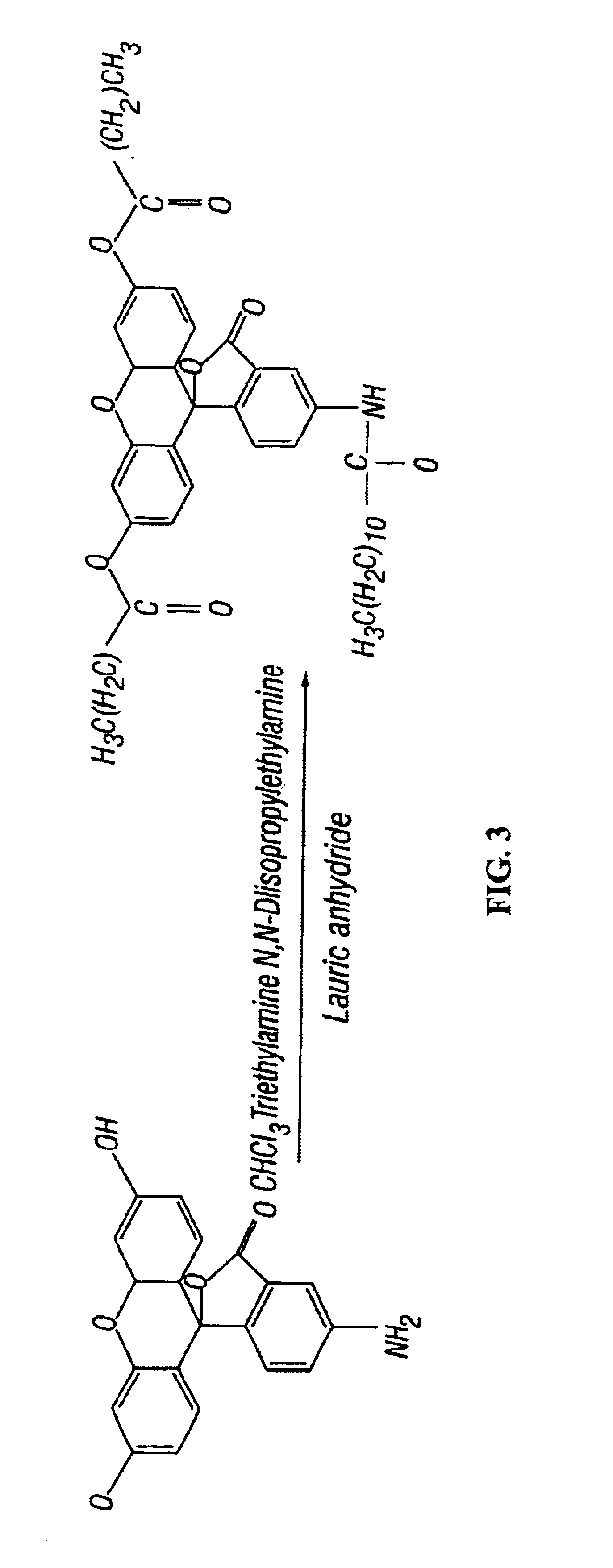Capillary array-based enzyme screening
a technology of capillary arrays and enzymes, applied in biochemistry apparatus and processes, instruments, organic chemistry, etc., can solve the problems of difficult chemical transformation, low enantioselectivity, and hampered polymer synthesis,
- Summary
- Abstract
- Description
- Claims
- Application Information
AI Technical Summary
Problems solved by technology
Method used
Image
Examples
example 1
DNA Isolation and Library Construction
[0141]The following outlines one procedure that may be used to generate a library from genomic DNA samples isolated from an environmental sample (see FIG. 1).
[0142]DNA isolation. DNA is isolated using the IsoQuick Procedure as per manufacturer's instructions (Orca Research Inc., Bothell, Wash.). The isolated DNA can optionally be normalized according to Example 2 below. Upon isolation, the DNA is sheared by pushing and pulling the NA through a 25-gauge double-hub needle and a l-cc syringe about 500 times. A small amount is run on a 0.8% agarose gel to make sure the majority of the DNA is in the desired size range (about 3-6 kb).
[0143]Blunt-ending DNA. The DNA is blunt-ended by mixing 45 μl of 10X Mung Bean Buffer, 2.0 pl Mung Bean Nuclease (150 u / μl) and water to a final volume of 405 μl. The mixture is incubated at 37° C. for 15 minutes. The mixture is phenol / chloroform extracted, followed by an additional chloroform extraction. One ml of ice c...
example 2
Normalization
[0159]Prior to library generation purified DNA can be normalized. DNA is first fractionated according to the following protocol. A sample composed of genomic DNA is purified on a cesium-chloride gradient. The cesium chloride (Rf=1.3980) solution is filtered through a 0.2 μm filter and 15 ml is loaded into a 35 ml OptiSeal tube (Beckmnan). The DNA is added and thoroughly mixed. Ten micrograms of bis-benzimide (Sigma; Hoechst 33258) is added and mixed thoroughly. The tube is then filled with the filtered cesium chloride solution and spun in a VTi50rotor in a Beckmran L8-70 Ultracentrifuge at 33 k rpm for 72 hours. Following centriftigation, a syringe pump and fractionator (Brandel Model 186) are used to drive the gradient through an ISCO UA-5 UV absorbance detector set to 280 nm. Peaks representing the DNA from the organisms present in an environmental sample are obtained. Eubacterial sequences can be detected by PCR amplification of DNA encoding rRNA from a 10-fold dilut...
example 3
Optical Detection of Enzyme Activity in Individual
Capillaries Using an Evaporative-Wick Cycle Approach.
[0164]Cell growth and enzyme activity were verified by wicking, through capillary action, a series of cell dilutions (clone # 604-1 α-gal positive) mixed with substrate (100 μM Umbα-gal) into individual capillary tubes. Each of the capillary tubes had a 100 μm inner diameter (I.D.) and 32 mm length (1 μl volume). Specifically, the wicking of the cell / substrate mixture was accomplished by placing an open end of the capillary tube into a reservoir containing a mixture of the positive cell clones and the Umb substrate. The same mixture was also plated out to confirm starting cell densities (CFU / tube@t=0). The tubes were then incubated overnight at 37° C. with their open ends submerged in a water bath.
[0165]A photomicrograph of various capillary tubes was obtained using an Eagle Eyes® (Stratagene; San Diego, Cailf.) modified with a different emission / blocking filter (Schott GG435). Tub...
PUM
| Property | Measurement | Unit |
|---|---|---|
| temperatures | aaaaa | aaaaa |
| temperatures | aaaaa | aaaaa |
| temperature | aaaaa | aaaaa |
Abstract
Description
Claims
Application Information
 Login to View More
Login to View More - R&D
- Intellectual Property
- Life Sciences
- Materials
- Tech Scout
- Unparalleled Data Quality
- Higher Quality Content
- 60% Fewer Hallucinations
Browse by: Latest US Patents, China's latest patents, Technical Efficacy Thesaurus, Application Domain, Technology Topic, Popular Technical Reports.
© 2025 PatSnap. All rights reserved.Legal|Privacy policy|Modern Slavery Act Transparency Statement|Sitemap|About US| Contact US: help@patsnap.com



